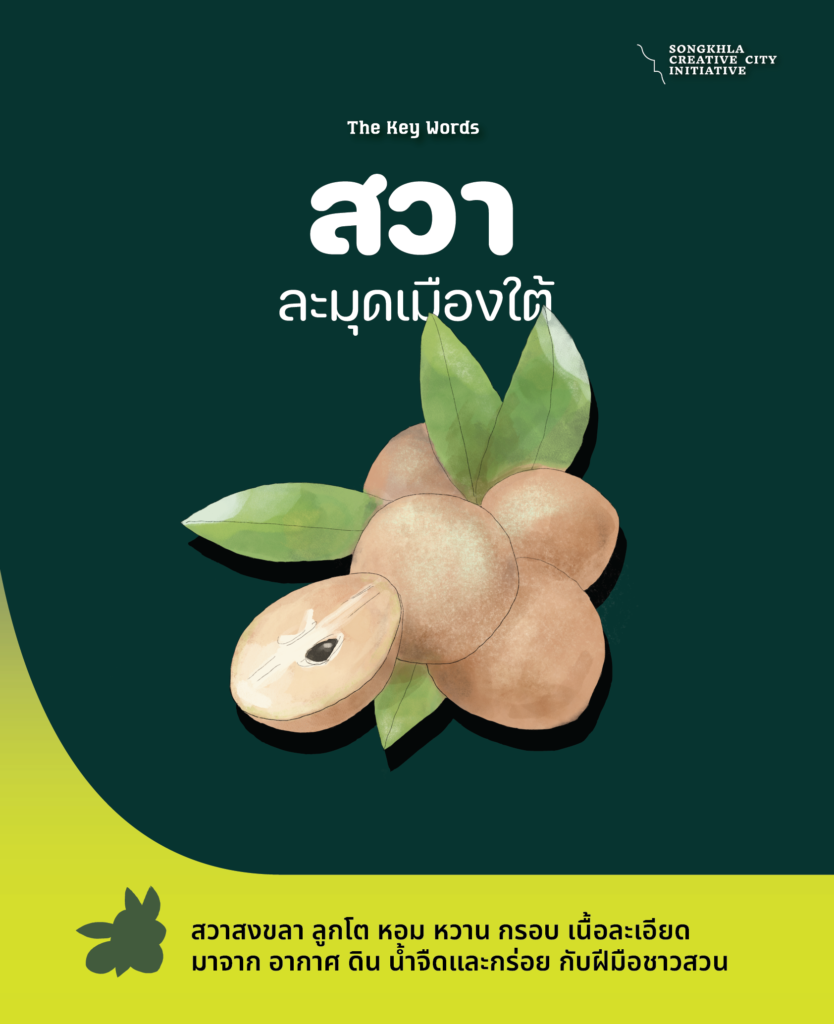
Anyone passing through Ko Yo at the start of the year will probably be familiar with the fruit stalls on the side of the road. Seeing the brown fruit lined up at the front of the stalls, outsiders at first glance may believe that the islanders are keen breeders of hens for eggs. However, we urge that you please try to keep these impressions at bay, park your car, and stop by the shops to try the Sawa or Ko Yo sapodilla. Because you can’t say you’ve experienced Ko Yo 100% if you miss the opportunity to taste it.
Locals are already familiar with “sawa”, sapodilla. Some places call it “chawanilo” (Pattani and Yala). In fact, the delicious sapodilla of Songkhla Province is not only found on Ko Yo. Bang Klam District (northwest of Hat Yai District) is another large growing area where sawa is so popular it is included in the district’s motto “Famous Luang Pu Fueng, famous for boat racing, source of sweet pomelo, Samphao Nawa area, famous sawa, delicious sticky rice”.
Sawa, or sapodilla, is a tropical tree of medium size with a dense crown, believed to have originated in Central America and the West Indies. The tree begins to produce fruit 3-4 years after planting. In Thailand there are 2 main types. The first is Thai sapodilla, sapodilla sida. The area famously known to most people for growing this sapodilla is Ban Lat District, Phetchaburi Province. The second type is western sapodilla, an umbrella term for varieties imported from abroad, such as Goose Egg, Malay Shuttle, and Luk Khaek varieties.
Ko Yo sapodilla has a sweet fragrance, crispy texture, and fine flesh, with a brown color when fully ripe. As Ko Yo is an island and surrounded by salt water, fresh water, and brackish water (three waters), the flavor of sapodilla here differs from other places. The majority of sapodilla farmers in Ko Yo sub-district prefer to grow the Goose Egg variety, although there are some Krasuay and Luk Khaek varieties.
__
If anyone has tried sapodilla or sawa in Songkhla, they will be aware that topography, soil quality, brackishness of the water, proximity to the ocean, and organic garden care without use of chemicals, all affect the taste, sweetness and texture. Locals can even tell the difference between Bang Klam sawa and Ko Yo sawa. These are outstanding characteristics, worthy of being promoted and exalted as “outstanding raw materials” in support of high-quality cultivation and systematic creation of jobs and income for the people of Songkhla.